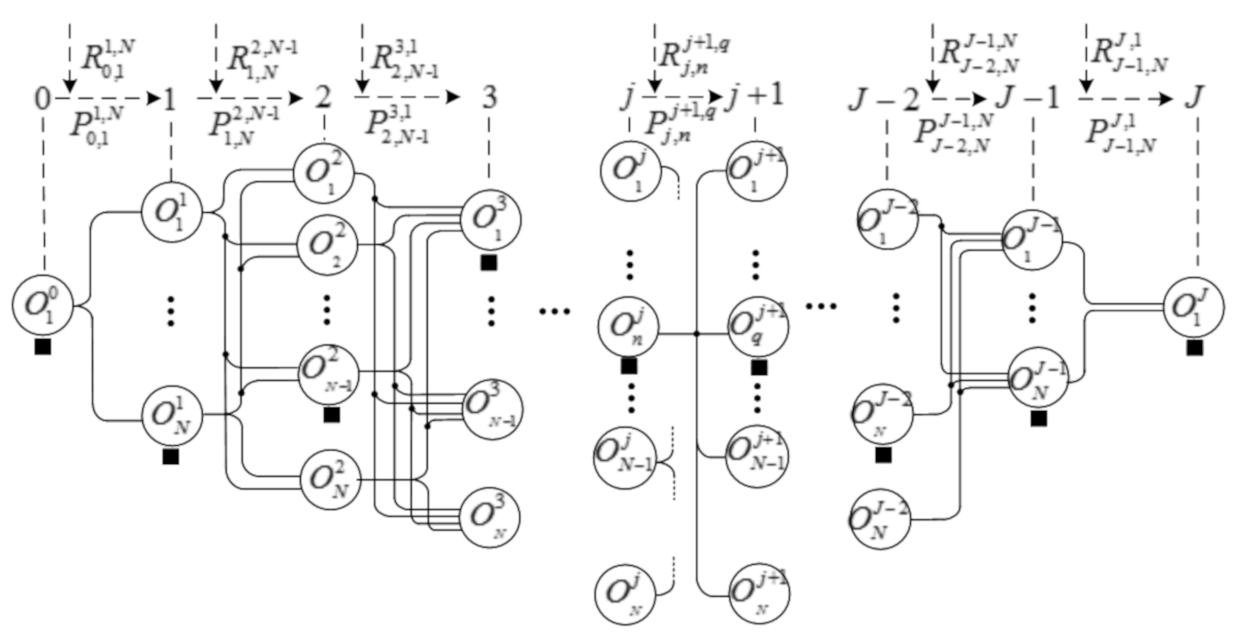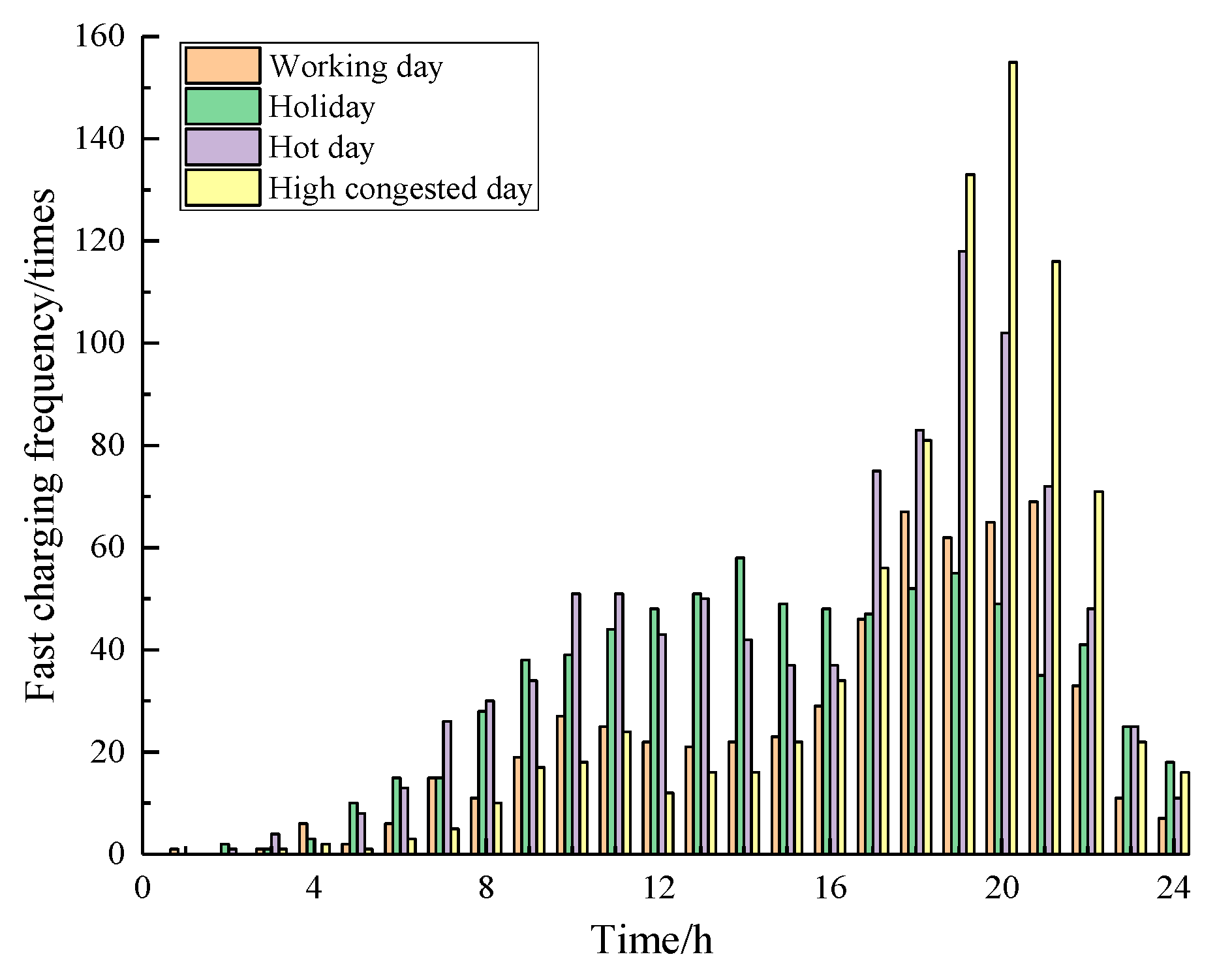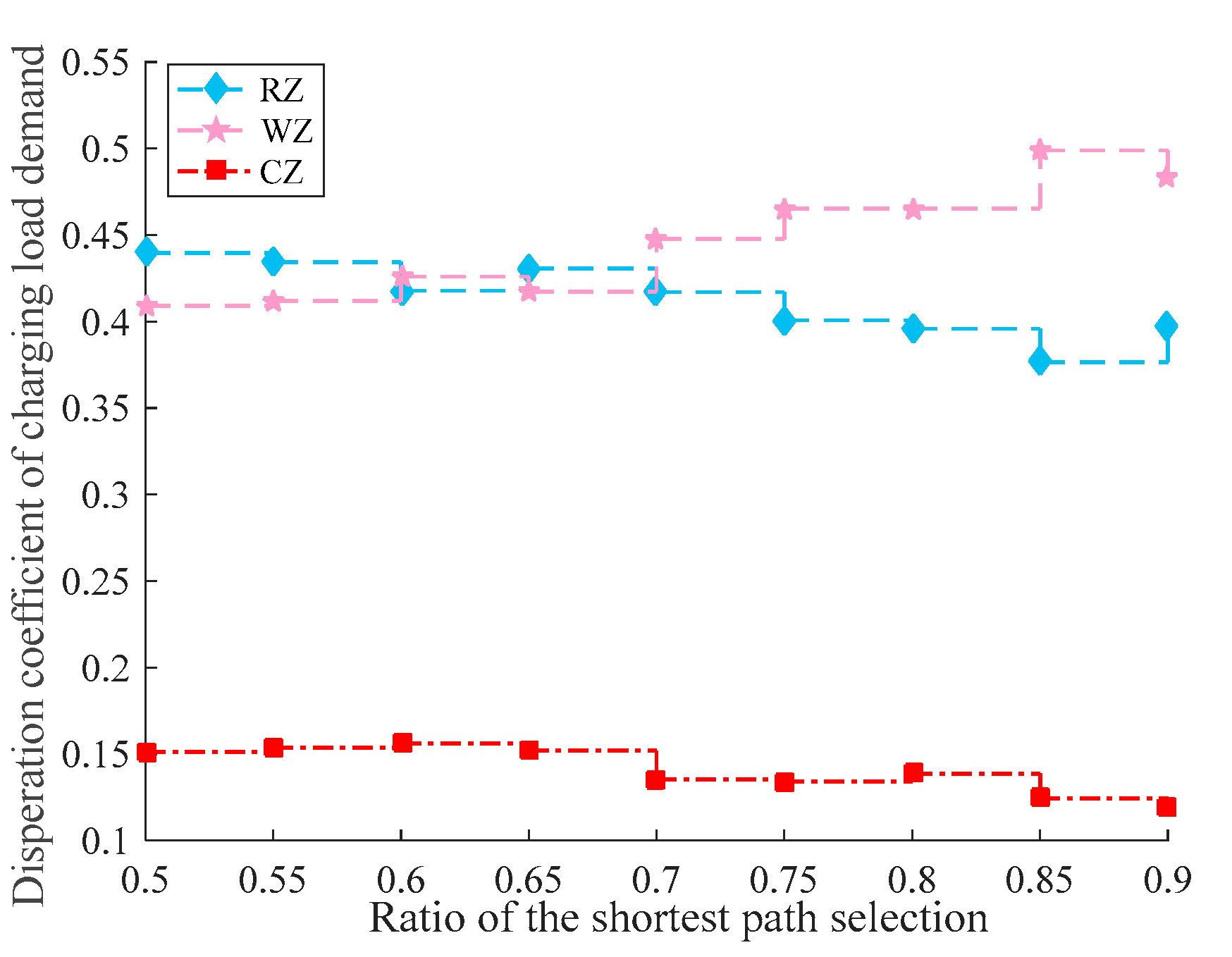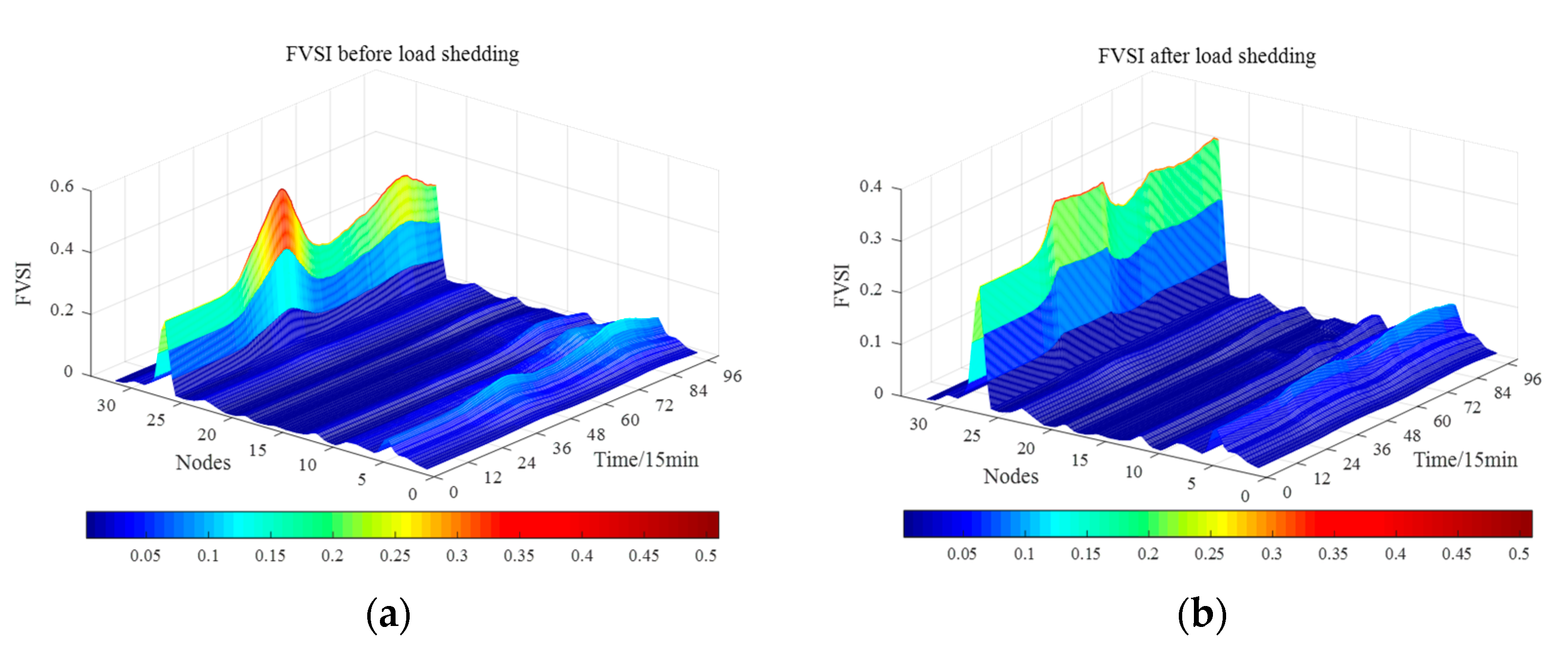Electrical Vehicle Charging Load Mobility Analysis Based on a Spatial–Temporal Method in Urban Electrified-Transportation Networks
Abstract
1. Introduction
2. Modelling Framework
2.1. Electrical Vehicles Travel Demand Model
2.2. EV Stochastic Path Selection Model
2.3. Electricity Consumption Model
2.4. Charging Demand Modelling Based on Drivers’ Intent
2.5. Probabilistic Effect on Load Demand
2.6. Distribution Network Charging Load Modeling
3. Distribution Network Performance Analysis
3.1. Distribution Network Performance Assessment Indexes
3.2. Distribution Network Performance Analysis through Monte Carlo Simulation
4. Case Study
4.1. Parameter Settings
4.2. Results and Discussion

5. Conclusions and Future Work
Supplementary Materials
Author Contributions
Funding
Data Availability Statement
Conflicts of Interest
References
- Outlook, IEA Global EV. 2022. Available online: https://www.iea.org/commentaries/electric-cars-fend-off-supply-challenges-to-more-than-double-global-sales (accessed on 10 December 2022).
- Rautiainen, A.; Repo, S.; Jarventausta, P.; Mutanen, A.; Vuorilehto, K.; Jalkanen, K. Statistical charging load modeling of PHEVs in electricity distribution networks using national travel survey data. IEEE Trans. Smart Grid 2012, 3, 1650–1659. [Google Scholar] [CrossRef]
- Tehrani, N.H.; Wang, P. Probabilistic estimation of plug-in electric vehicles charging load profile. Electr. Power Syst. Res. 2015, 124, 133–143. [Google Scholar] [CrossRef]
- Ul-Haq, A.; Azhar, M.; Mahmoud, Y.; Perwaiz, A.; Al-Ammar, E.A. Probabilistic modeling of electric vehicle charging pattern associated with residential load for voltage unbalance assessment. Energies 2017, 10, 1351. [Google Scholar] [CrossRef]
- Ul-Haq, A.; Cecati, C.; El-Saadany, E. Probabilistic modeling of electric vehicle charging pattern in a residential distribution network. Electr. Power Syst. Res. 2018, 157, 126–133. [Google Scholar] [CrossRef]
- Jawad, S.; Liu, J. Electrical vehicle charging services planning and operation with interdependent power networks and transportation networks: A review of the current scenario and future trends. Energies 2020, 13, 3371. [Google Scholar] [CrossRef]
- Luo, Y.; Zhu, T.; Wan, S.; Zhang, S.; Li, K. Optimal charging scheduling for large-scale EV (electric vehicle) deployment based on the interaction of the smart-grid and intelligent-transport systems. Energy 2016, 97, 359–368. [Google Scholar] [CrossRef]
- Shao, C.; Wang, X.; Wang, X.; Du, C.; Wang, B. Hierarchical Charge Control of Large Populations of EVs. IEEE Trans. Smart Grid 2015, 7, 1147–1155. [Google Scholar] [CrossRef]
- Su, S.; Zhao, H.; Zhang, H.; Lin, X.; Yang, F.; Li, Z. Forecast of electric vehicle charging demand based on traffic flow model and optimal path planning. In Proceedings of the 2017 19th International Conference on Intelligent System Application to Power Systems (ISAP), San Antonio, TX, USA, 17–20 September 2017; pp. 1–6. [Google Scholar] [CrossRef]
- Minelli, S.; Izadpanah, P.; Razavi, S. Evaluation of connected vehicle impact on mobility and mode choice. Traffic Transp. Eng. 2015, 2, 301–312. [Google Scholar] [CrossRef]
- Qian, K.; Zhou, C.; Allan, M.; Yuan, Y. Modeling of load demand due to ev battery charging in distribution systems. IEEE Trans. Power Syst. 2010, 26, 802–810. [Google Scholar] [CrossRef]
- Wang, T.-G.; Xie, C.; Xie, J.; Waller, T. Path-constrained traffic assignment: A trip chain analysis under range anxiety. Transp. Res. Part C Emerg. Technol. 2016, 68, 447–461. [Google Scholar] [CrossRef]
- Tang, D.; Wang, P. Nodal impact assessment and alleviation of moving electric vehicle loads: From traffic flow to power flow. IEEE Trans. Power Syst. 2016, 31, 4231–4242. [Google Scholar] [CrossRef]
- Wang, Y.; Infield, D. Markov Chain Monte Carlo simulation of electric vehicle use for network integration studies. Int. J. Electr. Power Energy Syst. 2018, 99, 85–94. [Google Scholar] [CrossRef]
- Zhang, H.; Hu, Z.; Xu, Z.; Song, Y. An integrated planning framework for different types of pev charging facilities in urban area. IEEE Trans. Smart Grid 2015, 7, 2273–2284. [Google Scholar] [CrossRef]
- Wang, X.; Shahidehpour, M.; Jiang, C.; Li, Z. Coordinated planning strategy for electric vehicle charging stations and coupled traffic-electric networks. IEEE Trans. Power Syst. 2018, 34, 268–279. [Google Scholar] [CrossRef]
- Hong, L.; Xu, Z.; Chang, L. Timing interactive analysis of electric private vehicle traveling and charging demand considering the sufficiency of charging facilities. Proc. CSEE 2018, 38, 5469–5478. [Google Scholar]
- Liu, K.; Liu, Y. Stochastic user equilibrium based spatial-temporal distribution prediction of electric vehicle charging load. Appl. Energy 2023, 339, 120943. [Google Scholar] [CrossRef]
- Lv, S.; Wei, Z.; Sun, G.; Chen, S.; Zang, H. Optimal power and semi-dynamic traffic flow in urban electrified transportation networks. IEEE Trans. Smart Grid 2019, 11, 1854–1865. [Google Scholar] [CrossRef]
- Wang, H.; Fang, Y.-P.; Zio, E. Risk assessment of an electrical power system considering the influence of traffic congestion on a hypothetical scenario of electrified transportation system in New York state. IEEE Trans. Intell. Transp. Syst. 2019, 22, 142–155. [Google Scholar] [CrossRef]
- Rezaee, S.; Farjah, E.; Khorramdel, B. Probabilistic analysis of plug-in electric vehicles impact on electrical grid through homes and parking lots. IEEE Trans. Sustain. Energy 2013, 4, 1024–1033. [Google Scholar] [CrossRef]
- Clairand, J.M.; Rodríguez-García, J.; Alvarez-Bel, C. Smart charging for electric vehicle aggregators considering users’ preferences. IEEE Access 2018, 6, 54624–54635. [Google Scholar] [CrossRef]
- Ahmad, F.; Iqbal, A.; Ashraf, I.; Marzband, M.; Khan, I. Optimal location of electric vehicle charging station and its impact on distribution network: A review. Energy Rep. 2022, 8, 2314–2333. [Google Scholar] [CrossRef]
- Kizhakkan, A.R.; Rathore, A.K.; Awasthi, A. Review of electric vehicle charging station location planning. In Proceedings of the 2019 IEEE Transportation Electrification Conference (ITEC-India), Bengaluru, India, 17–19 December 2019; pp. 1–5. [Google Scholar]
- Kaya, Ö.; Alemdar, K.D.; Campisi, T.; Tortum, A.; Çodur, M.K. The Development of decarbonisation strategies: A three-step methodology for the suitable analysis of current Evcs locations applied to Istanbul, Turkey. Energies 2021, 14, 2756. [Google Scholar] [CrossRef]
- Zhang, Q.; Zhu, Y.; Wang, Z.; Su, Y.; Li, C. Reliability assessment of distribution network and electric vehicle considering quasi-dynamic traffic flow and vehicle-to-grid. IEEE Access 2019, 7, 131201–131213. [Google Scholar] [CrossRef]
- Liu, G.; Kang, L.; Luan, Z.; Qiu, J.; Zheng, F. Charging station and power network planning for integrated electric vehicles (EVs). Energies 2019, 12, 2595. [Google Scholar] [CrossRef]
- Caro-Ruiz, C.; Al-Sumaiti, A.S.; Rivera, S.; Mojica-Nava, E. A mdp-based vulnerability analysis of power networks considering network topology and transmission capacity. IEEE Access 2019, 8, 2032–2041. [Google Scholar] [CrossRef]
- Liu, C.; Wang, J.; Cai, W.; Zhang, Y. An energy-efficient dynamic route optimization algorithm for connected and automated vehicles using velocity-space-time networks. IEEE Access 2019, 7, 108866–108877. [Google Scholar] [CrossRef]
- Wei, W.; Zhou, Y.; Zhu, J.; Hou, K.; Zhao, H.; Li, Z.; Xu, T. Reliability assessment for ac/dc hybrid distribution network with high penetration of renewable energy. IEEE Access 2019, 7, 153141–153150. [Google Scholar] [CrossRef]
- Su, S.; Hu, Y.; He, L.; Yamashita, K.; Wang, S. An assessment procedure of distribution network reliability considering photovoltaic power integration. IEEE Access 2019, 7, 60171–60185. [Google Scholar] [CrossRef]









| Scenarios | LOLP (Year) | SAIFI (t/Year) | SAIDI (h/Year) | IEENS (MWh/Year) |
|---|---|---|---|---|
| With 70% penetration during working day | 0.004252 | 13.5853 | 4.5835 | 37.1596 |
| With 85% penetration during working day | 0.004371 | 13.9235 | 4.8358 | 40.4833 |
| With 100% penetration during working day | 0.004401 | 14.6854 | 5.2136 | 45.1584 |
| Highly congested day | 0.004477 | 14.9158 | 5.3234 | 51.7656 |
| Hot day | 0.004512 | 14.9647 | 5.3743 | 54.8174 |
Disclaimer/Publisher’s Note: The statements, opinions and data contained in all publications are solely those of the individual author(s) and contributor(s) and not of MDPI and/or the editor(s). MDPI and/or the editor(s) disclaim responsibility for any injury to people or property resulting from any ideas, methods, instructions or products referred to in the content. |
© 2023 by the authors. Licensee MDPI, Basel, Switzerland. This article is an open access article distributed under the terms and conditions of the Creative Commons Attribution (CC BY) license (https://creativecommons.org/licenses/by/4.0/).
Share and Cite
Jawad, S.; Liu, J. Electrical Vehicle Charging Load Mobility Analysis Based on a Spatial–Temporal Method in Urban Electrified-Transportation Networks. Energies 2023, 16, 5178. https://doi.org/10.3390/en16135178
Jawad S, Liu J. Electrical Vehicle Charging Load Mobility Analysis Based on a Spatial–Temporal Method in Urban Electrified-Transportation Networks. Energies. 2023; 16(13):5178. https://doi.org/10.3390/en16135178
Chicago/Turabian StyleJawad, Shafqat, and Junyong Liu. 2023. "Electrical Vehicle Charging Load Mobility Analysis Based on a Spatial–Temporal Method in Urban Electrified-Transportation Networks" Energies 16, no. 13: 5178. https://doi.org/10.3390/en16135178
APA StyleJawad, S., & Liu, J. (2023). Electrical Vehicle Charging Load Mobility Analysis Based on a Spatial–Temporal Method in Urban Electrified-Transportation Networks. Energies, 16(13), 5178. https://doi.org/10.3390/en16135178







